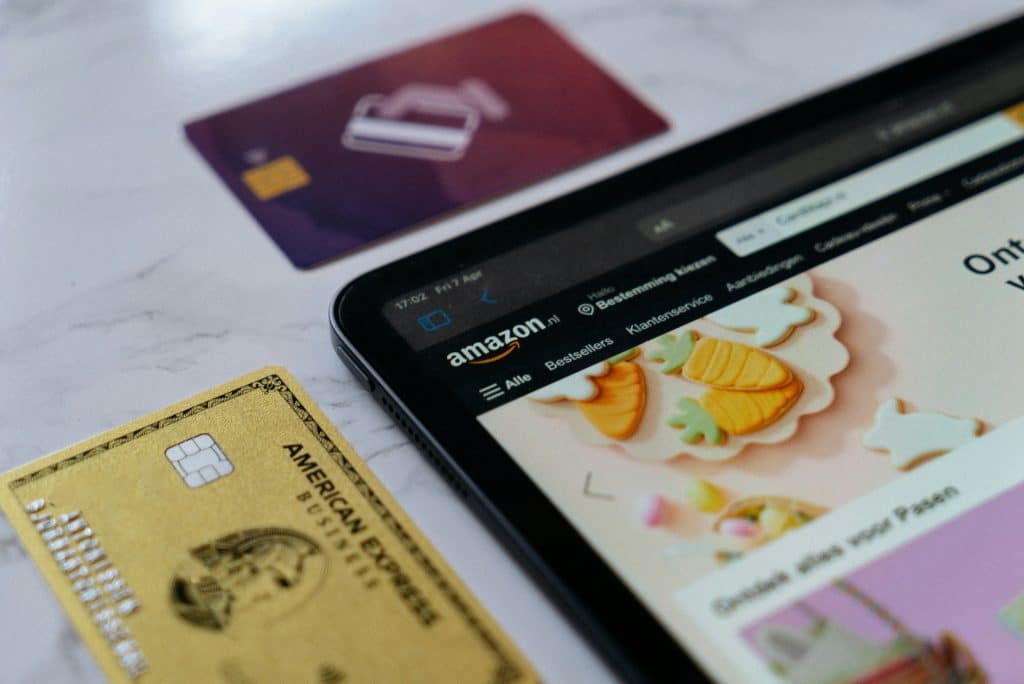How Ecommerce Payment Processing Works
Ecommerce payment processing handles the transfer of funds for convenience. Here’s why it’s important and how it works.
While you formed an eCommerce business to sell high-quality products, all sellers have another common goal: to get paid. In order to get paid, sellers must take the consumer’s funds and transfer them to their bank account. And this process is more nerve-wracking than you expect.
Fortunately, ecommerce payment processing makes this process simple. This is third-party software that transfers a customer’s sales to the ecommerce business. They not only pay you, but also come with robust data security protocols to ensure you and your customers are safe from hackers.
There are numerous payment processing platforms, and selecting the best one can be daunting for new sellers.
What is Ecommerce Payment Processing?
An ecommerce payment service provider is software that accepts and transfers funds earned for goods and services. This software secures transaction information between sellers and customers.
There are several examples of payment processors. Here are the most common ones:
- Mobile payments. Purchases made directly on a phone. Examples include Apple Pay.
- Credit and debit cards. Card issuers (such as Mastercard and Visa) authorize the payment.
- Bank transfer. When a customer sends money directly from their bank account to the seller. Checks are a classic example, but customers can now use a third-party app, such as Zelle, to ease the process.
- Buy now, pay later (BNPL). Customers pay the merchant in several series of smaller payments. This option usually includes a separate fee.
Choosing the Best eCommerce Payment Processor
Before selecting a payment processor, consider several factors that may affect your business. Here’s how to choose the right ecommerce payment processing company:
- Evaluate payment methods. Look at past orders and gauge which payment methods are preferred by your customers. The best payment processors accept a variety of payment options but prioritize the ones your customers use.
- Security. All payment processors must have an SSL certificate to ensure secure payment processing.
- Tokenization. Some payment processors give customers the option to save their data for faster future checkouts.
- International payments. If you sell globally, find a processor that accepts foreign payments.
- Fees. Payment processors aren’t cheap. Sellers may pay different costs, such as a subscription fee, set-up expenses, and per-transaction costs.
- Integrations. If you’re already using an eCommerce platform, find payment processors that integrate with your existing system.

Best eCommerce Payment Processing Providers
Are you ready to find a payment processor? Here are the most popular options.
Amazon Pay
If Amazon is your primary platform, you can use the ecommerce giant’s payment platform and receive numerous benefits. Amazon Pay saves your customers’ information. It not only connects to your Amazon account but also to your website, expediting the checkout process.
Amazon payment processing offers robust fraud protection, is available in numerous countries, includes IT support, and helps businesses resolve disputes and manage chargebacks.
Remember that sellers only receive Amazon monthly payments in case of refunds or disputes. If you need your funds more quickly, you can choose one of these alternative payment processors.
Stripe
Stripe is a favorite among ecommerce owners due to its tools and flexibility. It integrates with most major ecommerce platforms and offers its own reports dashboard, where you can get a snapshot of your sales performance.
Sellers can also use Stripe to manage disputes and get fraud protection.
PayPal
PayPal is a household name due to its capabilities for both personal and business use. It’s often the preferred choice for ecommerce payment processing among new sellers because it’s easy to use, reliable, and most people already have a PayPal account.
Since PayPal is popular, most ecommerce platforms offer it as an integration. When customers see the PayPal button, they simply need to click it and be redirected to PayPal’s checkout page.
PayPal is also one of the most secure payment processing services. Sellers can take advantage of their fraud protections, and customers can easily file claims on their dashboards.
There are downsides to PayPal, however. For example, its transaction fees are higher than those of its competitors.
Square
Square is the best ecommerce payment processing system for sellers who do business online and from a brick-and-mortar store.
This is a digital POS system, and Square offers various card readers for in-person checkout. Square accepts all major credit card carriers in addition to Apple, Google, and Samsung Pay.
If you only need online payment processing, Square still offers many benefits for you. You can create your store on Square, and their backend is user-friendly.
There’s also a website builder if you’re new to ecommerce or if you have a selling platform, Square integrates with most major systems. Square processes payments quickly–you can receive all sales by the next business day.
Shopify Payments
If you have a Shopify account, you’ll be happy to know that the eCommerce platform has its payment processor. The main advantage of Shopify Payments is that you don’t need to integrate a third-party platform into your existing store.
You can also add Shopify’s Shop Pay to your store, which is a user-friendly accelerated checkout option that boasts a 9% higher repurchase rate.
Helcim
If you’re looking for an affordable eCommerce payment processing option, Helcim is a top option. Instead of a fixed fee, sellers are charged an interchange fee.
These payment processing fees can be less expensive, depending on the products you sell and the transaction methods that customers use.

Ecommerce Payment Processing FAQs
How does payment processing work?
When a customer makes a purchase, it’s sent to the payment processor. The next steps depend on the payment method. For example, if the customer pays with a credit card, the payment processor contacts the card issuer. The bank or card issuer then approves the transaction.
From here, the funds are transferred into the merchant’s account, and the payment processor deducts any applicable interchange fees. How sellers get paid depends on the payment processors. Some sellers see the funds immediately, while others have a payout date.
Do I need a merchant account for these payment processors?
It depends. Since a merchant account allows you to receive funds, it’s necessary for platforms like PayPal that act as a bank. Others, such as Amazon Pay or Shopify Payments, are included with your subscription.
What is an interchange fee?
Payment processors apply interchange fees per transaction. They can either be a percentage of the transaction or a fixed fee applied to all sales.
I receive a significant number of international sales. Which payment processor should I use?
Amazon Pay is your best bet if you use the ecommerce giant as your main platform. If not, all the platforms mentioned accept international payments. Each comes with different fees and payment methods, and may only be accepted in specific countries.
How do payment processors handle refunds?
This depends on the platform, but most allow you to issue refunds directly from the dashboard. Some platforms may charge you for refunds, and interchange fees aren’t refundable.
How do payment processors handle disputes?
First, what’s a dispute? This is when a customer works with their card issuer to cancel the transaction.
There are many reasons why a dispute can occur, but the payment processor will first ensure the reasoning for their dispute is legitimate; for example, if you charged the incorrect amount for a product.
If the customer wins, they’ll be refunded, but keep in mind that if you win, disputes come with hefty and often nonrefundable fees.
Ecommerce Payment Processing is Efficient
Receiving payments is a significant concern for many sellers. Fortunately, ecommerce payment processing makes this process simple. Payment processors transfer funds from the customer to the seller.
There are several payment processors out there. Consider our recommendations and select the payment processor that best suits your needs.
Payment processing shouldn’t be the only concern for new businesses. An ecommerce consultant can provide the strategies and knowledge to run a successful business.
Author
 Stephanie Jensen has been writing ecommerce content for seven years, and her copy has helped numerous stores rank on Amazon. Follow her on LinkedIn for more insight into freelance writing and creating high-quality content.
Stephanie Jensen has been writing ecommerce content for seven years, and her copy has helped numerous stores rank on Amazon. Follow her on LinkedIn for more insight into freelance writing and creating high-quality content.
The post How Ecommerce Payment Processing Works appeared first on AMZ Advisers.



